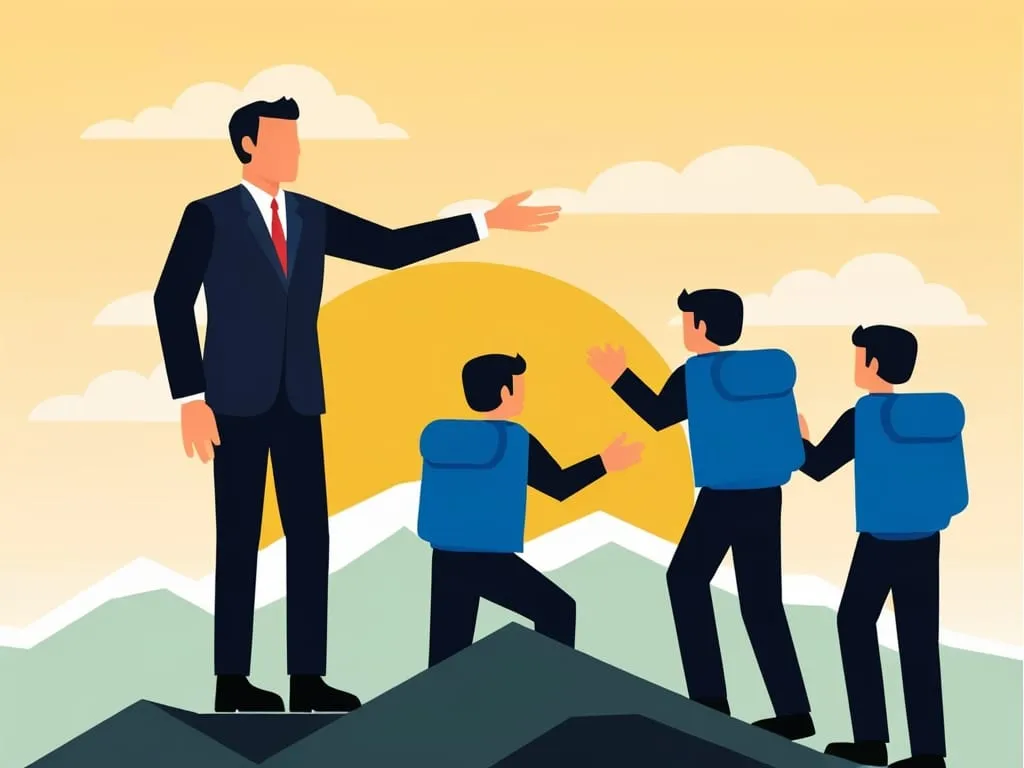In the ever-shifting landscape of modern business, adaptability has become the lifeblood of successful teams. As leaders, we’re tasked with not just steering the ship but ensuring our crew can navigate through any storm. Let’s explore five powerful practices that can transform your team into a flexible, responsive unit ready to tackle whatever challenges come their way.
Picture this: a team that seamlessly shifts gears, adapts to new situations, and thrives in uncertainty. It’s not just a dream - it’s achievable with the right approach. We’ll start by examining the power of dynamic team rotations. This practice involves regularly shuffling team members between different roles and projects. It’s like cross-training for your workforce, building a versatile skill set across the board.
“The measure of intelligence is the ability to change.” - Albert Einstein
Einstein’s words ring true in the context of team adaptability. By implementing dynamic rotations, we’re not just moving people around; we’re cultivating a culture of continuous learning and flexibility. Team members gain fresh perspectives, develop empathy for different roles, and become more well-rounded professionals.
But how do we implement this without disrupting workflow? The key lies in strategic planning and clear communication. Start with short-term rotations, perhaps a week or two, and gradually extend the duration as your team becomes more comfortable with the process. Encourage feedback and adjust as needed. You’ll find that over time, your team becomes more cohesive and adaptable, ready to tackle challenges from multiple angles.
Next, let’s talk about micro-learning challenges. These are bite-sized learning opportunities designed to push your team out of their comfort zone in small, manageable doses. Think of it as mental calisthenics for your team’s adaptability muscles.
Here’s a question to ponder: How can we make learning a daily habit for our teams?
Micro-learning challenges provide the answer. These could be quick problem-solving exercises, short skill-building workshops, or even gamified learning experiences. The goal is to keep your team on their toes, constantly expanding their capabilities in a low-pressure environment.
One effective approach is to introduce a “Challenge of the Week.” This could be anything from solving a complex puzzle to learning a new software tool. The key is to make it relevant to your team’s work while stretching their abilities. Not only does this build adaptability, but it also injects a sense of fun and friendly competition into the workplace.
Now, let’s dive into rapid response simulations. These are controlled exercises designed to test and improve your team’s ability to react quickly to unexpected situations. It’s like fire drills for your business strategy.
“In preparing for battle I have always found that plans are useless, but planning is indispensable.” - Dwight D. Eisenhower
Eisenhower’s insight captures the essence of rapid response simulations. The goal isn’t to predict every possible scenario but to hone your team’s ability to think on their feet and adapt swiftly.
Start by creating realistic scenarios that your team might face - a sudden market shift, a major client crisis, or a technological disruption. Then, without warning, present these scenarios to your team and challenge them to develop a response plan within a tight timeframe. The pressure of the simulation forces quick thinking and collaboration, key components of adaptability.
After each simulation, conduct a thorough debrief. What worked well? Where did the team struggle? Use these insights to refine your processes and strengthen your team’s adaptive capabilities. Over time, you’ll notice your team becoming more confident and agile in the face of real-world challenges.
Let’s shift gears and talk about implementing flexible goal frameworks. Traditional rigid goal-setting can sometimes hinder adaptability. Instead, we need a system that allows for adjustment without losing sight of the bigger picture.
Consider adopting an OKR (Objectives and Key Results) framework. This approach sets high-level objectives while allowing flexibility in how those objectives are achieved. It’s a balance of direction and adaptability that can transform how your team operates.
The key here is regular check-ins and adjustments. Set quarterly objectives, but review progress monthly. Be open to pivoting strategies if the situation demands it. This approach keeps your team aligned with overall goals while remaining nimble enough to adapt to changing circumstances.
How can we ensure our goals motivate rather than constrain our teams?
The answer lies in involving your team in the goal-setting process. When team members have a say in defining objectives and key results, they’re more invested in achieving them. This collaborative approach also taps into the diverse perspectives within your team, often leading to more innovative and adaptable strategies.
Lastly, let’s explore the practice of regular skill-swap sessions. These are structured opportunities for team members to teach each other new skills or share knowledge. It’s a powerful way to leverage the diverse talents within your team while fostering a culture of continuous learning.
Organize monthly or bi-monthly sessions where team members can volunteer to teach a skill they excel in. This could be anything from a technical skill to a soft skill like effective communication or time management. The beauty of this approach is that it not only builds adaptability but also strengthens team bonds and recognizes individual strengths.
“The capacity to learn is a gift; the ability to learn is a skill; the willingness to learn is a choice.” - Brian Herbert
Herbert’s words remind us that learning is a multifaceted process. Skill-swap sessions tap into all these aspects, creating a rich environment for growth and adaptability.
To make these sessions effective, create a supportive atmosphere where everyone feels comfortable both teaching and learning. Encourage questions and discussions. You might be surprised at the hidden talents and knowledge your team members possess.
As we wrap up, let’s reflect on how these five practices intertwine to create a truly adaptable team. Dynamic rotations build versatility, micro-learning challenges keep skills sharp, rapid response simulations test reactivity, flexible goal frameworks provide direction with agility, and skill-swap sessions leverage collective knowledge.
Implementing these practices isn’t just about preparing for future challenges; it’s about creating a more engaged, confident, and cohesive team today. You’ll likely see improvements in problem-solving, creativity, and overall performance as your team becomes more adaptable.
Remember, building team adaptability is an ongoing process. It requires commitment, patience, and a willingness to embrace change at all levels. But the rewards - a team that can confidently navigate any challenge - are well worth the effort.
What steps will you take today to start building a more adaptable team?
By embracing these practices, you’re not just preparing your team for the future; you’re creating a dynamic, resilient workforce capable of turning challenges into opportunities. In the ever-evolving business landscape, that’s not just an advantage - it’s a necessity.






